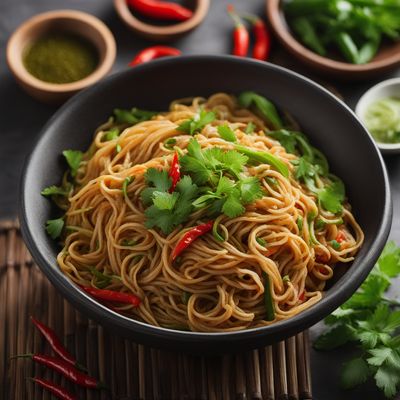
Dish
Biangbiang Noodles
Biangbiang noodles are a staple in Chinese cuisine and are enjoyed by people all over the world. The dish is typically made by hand-pulling the noodles and then tossing them in a sauce made from chili oil, soy sauce, and other seasonings. The dish is then topped with sliced garlic and green onions for added flavor and texture.
Origins and history
Biangbiang noodles originated in Shaanxi province in China and have been a popular dish in Chinese cuisine for centuries. The dish is named after the sound that the noodles make when they are hand-pulled.
Dietary considerations
Biangbiang noodles are not suitable for vegetarians or vegans as they contain meat. They are also high in sodium due to the use of soy sauce in the recipe.
Variations
There are many variations of biangbiang noodles, including those that use different types of meat or vegetables in the sauce. Some variations also use different types of noodles or seasonings.
Presentation and garnishing
Biangbiang noodles are typically served in a large bowl with the noodles and sauce mixed together. The dish is often garnished with sliced garlic and green onions for added flavor and texture.
Tips & Tricks
To make the dish more flavorful, try adding additional seasonings such as ginger or Sichuan peppercorns to the sauce. You can also experiment with different types of noodles or toppings to create your own unique version of the dish.
Side-dishes
Biangbiang noodles are often served with a side of pickled vegetables or chili oil for added flavor. Other popular side dishes include dumplings or steamed vegetables.
Drink pairings
Biangbiang noodles pair well with light, refreshing drinks such as green tea or a cold beer.
Delicious Biangbiang Noodles recipes
More dishes from this category... Browse all »

Abura soba
Japanese cuisine

Ants Climbing a Tree
Chinese cuisine

Asahikawa ramen
Japanese cuisine

Bibim guksu
Korean cuisine

Bukkake udon
Japanese cuisine

Burnt Miso Ramen
Japanese cuisine

Bánh canh
Vietnamese cuisine

Bánh canh cua
Vietnamese cuisine




